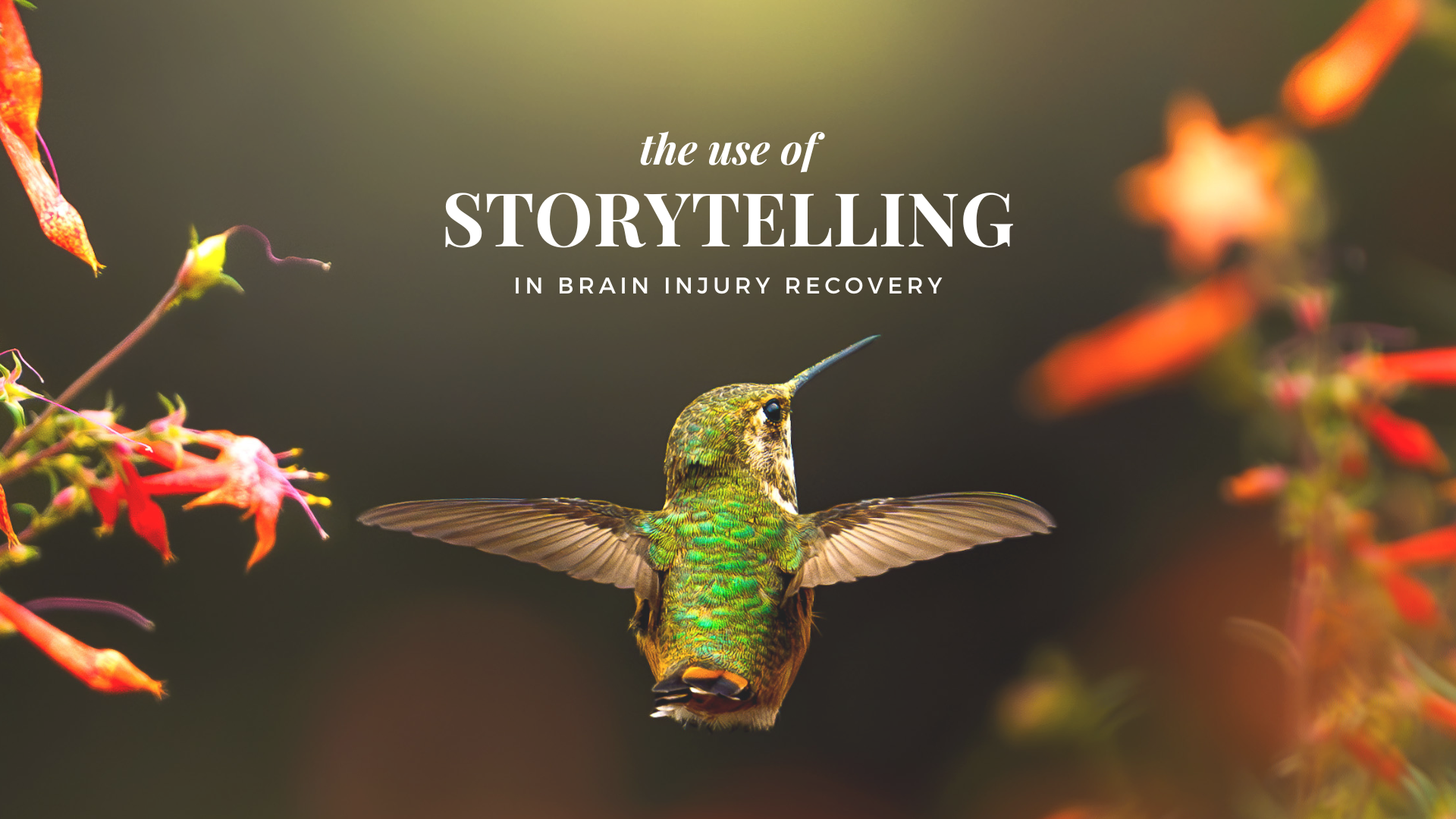Storytelling in Brain Injury Rehabilitation
A Review of Research: Storytelling
“While identity changes following a brain injury are often described as an experience of “loss,” it can be helpful to view identity disruption and reconstruction as a process of transition such as “the recovering self” or “discovering the new me.” Indeed, identity is not a static state, but an evolving process, shaped through our interactions with the social world and appraisal of such experiences (Candlish, L., et al., 2022).
What do we already know?
- Anthropologists tell us that storytelling shapes culture. Stories tell us about the world around us, and our place in it.
- An acquired brain injury is a disruptive event.
- When a person with an acquired brain injury expresses themselves using a narrative technique (storytelling, written narration, poetry, photography and song) it was consistently reported to positively influence their experience with self-identity (D’Cruz K, et al., 2019).
- Narrative storytelling as a therapeutic model has strong theoretical foundations.
- Understanding changes to identity following brain injury and supporting identity reconstruction is integral to rehabilitation and recovery.
What did they do?
The authors searched 10 databases for peer reviewed articles, theses, and dissertations published between 1990 and 2021. They narrowed their search down based on criteria to find 13 articles documenting storytelling interventions.
What did they want to know?
The authors wanted to understand the characteristics of storytelling interventions and determine where there are gaps in the literature. They state, “storytelling interventions are still in the exploratory stages with a limited evidence base for making judgements about efficacy of specific approaches.”
What did they find?
- The authors found intervention categories ranging from film production to visual art, written publication, and song composition. The common elements of these approaches are as follows:
- All interventions contained narrative (storytelling) and performance elements.
- The timing of the approach was consistent with a community integration process.
- In general, storytelling interventions involved emotional processing, sense and meaning-making, identity exploration and reconstruction, and engagement with others in their community.
- There was a collaborative element in all approaches except for one (art therapy approach). The collaborative element can be a trained practitioner, a production team, a music therapist, etc.
- 8 of 11 approaches included a reflective process (reviewing and discussing story output), and 6 of 11 included a purposeful community engagement element.
What does this mean?
- There is not a specific method of storytelling that is more impactful compared to other methods for brain injury rehabilitation. The authors state “there may be a variety of storytelling approaches that could achieve similar effects.” This flexibility can be a strength. However, there are common elements across all approaches that are important to consider for design of future research and for interventions.
- -Expression through a creative medium (such as music or visual art) may help the person with ABI distance themselves from an immediate audience. To support community engagement, collaborators can help support transitioning the subjective representation of ABI to an expression to be understood by a wider audience. Accompanying storylines may be helpful.
- Having the wider community involved, either as participants or as observers, may contribute to the benefits of storytelling rehabilitation and recovery. This may support the individual with ABI to feel heard and valued, supporting the acceptance of self-identity post-injury.
References:
Candlish, L., Fadyl, J. K., & D’Cruz, K. (2022). Storytelling as an intervention in traumatic brain injury rehabilitation: a scoping review. Disability and Rehabilitation, 45(13), 2248–2262. https://doi.org/10.1080/09638288.2022.2084778
D’Cruz K, Douglas J, Serry T. Personal narrative approaches in rehabilitation following traumatic brain injury: a synthesis of qualitative research. Neuropsychology Rehabilitation. 2019;29(7):985–1004.
Written by: Cheyenne Lee
Photography by: Wyatt Gehl Photography



